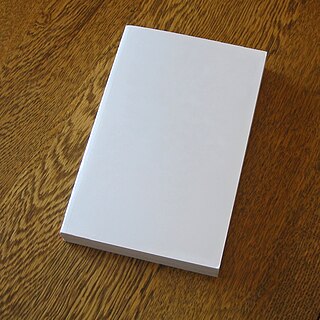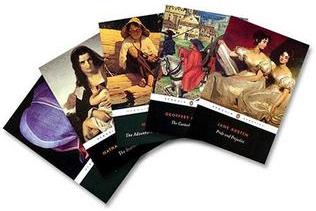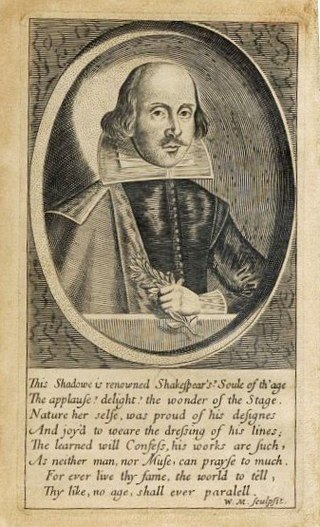
A paperback book is one with a thick paper or paperboard cover, and often held together with glue rather than stitches or staples. In contrast, hardcover (hardback) books are bound with cardboard covered with cloth, leather, paper, or plastic.

The Hogarth Press is a book publishing imprint of Penguin Random House that was founded as an independent company in 1917 by British authors Leonard Woolf and Virginia Woolf. It was named after their house in Richmond, in which they began hand-printing books as a hobby during the interwar period.

Penguin Books Limited is a British publishing house. It was co-founded in 1935 by Allen Lane with his brothers Richard and John, as a line of the publishers The Bodley Head, only becoming a separate company the following year. Penguin revolutionised publishing in the 1930s through its inexpensive paperbacks, sold through Woolworths and other stores for sixpence, bringing high-quality fiction and non-fiction to the mass market. Its success showed that large audiences existed for serious books. It also affected modern British popular culture significantly through its books concerning politics, the arts, and science.

The Germ, thoughts towards nature in art and literature (1850) was a periodical established by the Pre-Raphaelite Brotherhood to disseminate their ideas. The magazine was edited by William Michael Rossetti. The Germ was renamed Art and Poetry, being Thoughts towards Nature, conducted principally by Artists for its last two issues. It was not a success, only surviving for four issues between January and April 1850.

David William Gentleman is an English artist. He studied art and painting at the Royal College of Art under Edward Bawden and John Nash. He has worked in watercolour, lithography and wood engraving, at scales ranging from platform-length murals for Charing Cross Underground Station in London to postage stamps and logos.
Grosset & Dunlap is a New York City-based publishing house founded in 1898.

The New American Library is an American publisher based in New York, founded in 1948. Its initial focus was affordable paperback reprints of classics and scholarly works as well as popular and pulp fiction, but it now publishes trade and hardcover titles. It is currently an imprint of Penguin Random House; it was announced in 2015 that the imprint would publish only nonfiction titles.
Merrymount Press was a printing press in Boston, Massachusetts, founded by Daniel Berkeley Updike in 1893. He was committed to creating books of superior quality and believed that books could be simply designed, yet beautiful. Upon his death in 1941, the Press was taken over by his partner John Bianchi, but ceased operations in 1949. Updike and his Merrymount Press left a lasting impression on the printing industry, and today Updike is considered one of the most distinguished printers of the twentieth century. Stanley Morison, the typographer responsible for creating the ubiquitous Times New Roman, had this to say of the Merrymount Press after Updike's passing: “The essential qualities of the work of the Merrymount Press...may be said without exaggeration…to have reached a higher degree of quality and consistency than that of any other printing-house of its size, and period of operation, in America or Europe.”

Penguin Classics is an imprint of Penguin Books under which classic works of literature are published in English, Spanish, Portuguese, and Korean among other languages. Literary critics see books in this series as important members of the Western canon, though many titles are translated or of non-Western origin; indeed, the series for decades since its creation included only translations, until it eventually incorporated the Penguin English Library imprint in 1986. The first Penguin Classic was E. V. Rieu's translation of The Odyssey, published in 1946, and Rieu went on to become general editor of the series. Rieu sought out literary novelists such as Robert Graves and Dorothy Sayers as translators, believing they would avoid "the archaic flavour and the foreign idiom that renders many existing translations repellent to modern taste".

The Machin series of postage stamps is the main definitive stamp series in the United Kingdom, used since 5 June 1967. It is the second series to figure the image of Elizabeth II, replacing the Wilding series. The last issue was on 4 April 2022, four months before her death on 8 September.

John Benson was a London publisher of the middle seventeenth century, best remembered for a historically important publication of the Sonnets and miscellaneous poems of William Shakespeare in 1640.
Romek Marber was a Polish-born British graphic designer and academic known for his work illustrating the covers of Penguin Books. He retired in 1989, becoming a Professor Emeritus of Middlesex University.

Frederick Warne & Co. is a British publisher founded in 1865. It is known for children's books, particularly those of Beatrix Potter, and for its Observer's Books.

The Observer's Books are a series of small, pocket-sized books, published by Frederick Warne & Co in the United Kingdom from 1937 to 2003. They covered topics such as hobbies, art, history and wildlife. Intended for children, the aim of these books was to interest the observer. Some of them have become collector's items. For the dedicated collector this could be a lifetime's work as there are over 800 variations, some of which are now rare. The values of the books can vary from 50 pence to hundreds of pounds.

Sonnet 127 of Shakespeare's sonnets (1609) is the first of the Dark Lady sequence, called so because the poems make it clear that the speaker's mistress has black hair and eyes and dark skin. In this poem the speaker finds himself attracted to a woman who is not beautiful in the conventional sense, and explains it by declaring that because of cosmetics one can no longer discern between true and false beauties, so that the true beauties have been denigrated and out of favour.

Edmund Evans was an English wood-engraver and colour printer during the Victorian era. He specialized in full-colour printing, a technique which, in part because of his work, became popular in the mid-19th century. He employed and collaborated with illustrators such as Walter Crane, Randolph Caldecott, Kate Greenaway and Richard Doyle to produce what are now considered to be classic children's books. Little is known about his life, although he wrote a short autobiography before his death in 1905 in which he described his life as a printer in Victorian London.
The Pevsner Architectural Guides are a series of guide books to the architecture of Great Britain and Ireland. Begun in the 1940s by the art historian Sir Nikolaus Pevsner, the 46 volumes of the original Buildings of England series were published between 1951 and 1974. The series was then extended to Scotland, Wales and Ireland in the late 1970s. Most of the English volumes have had subsequent revised and expanded editions, chiefly by other authors.
The Arden Shakespeare is a long-running series of scholarly editions of the works of William Shakespeare. It presents fully edited modern-spelling editions of the plays and poems, with lengthy introductions and full commentaries. There have been three distinct series of The Arden Shakespeare over the past century, with the third series commencing in 1995 and concluding in January 2020. Arden was the maiden name of Shakespeare's mother, Mary, but the primary reference of the enterprise's title is to the Forest of Arden, in which Shakespeare's As You Like It is set.

The Penguin Collectors Society (PCS) is a charity based in the United Kingdom. Its main purpose is to promote the study and research of all aspects of Penguin Books, the publishing company founded by Allen Lane in 1935.

In 1845, the English-born Welsh architect Owen Jones designed an illustrated and decorated version of the 1662 Book of Common Prayer, the official prayer book of the United Church of England and Ireland. It was published in London by John Murray, with two new editions following in 1863.















